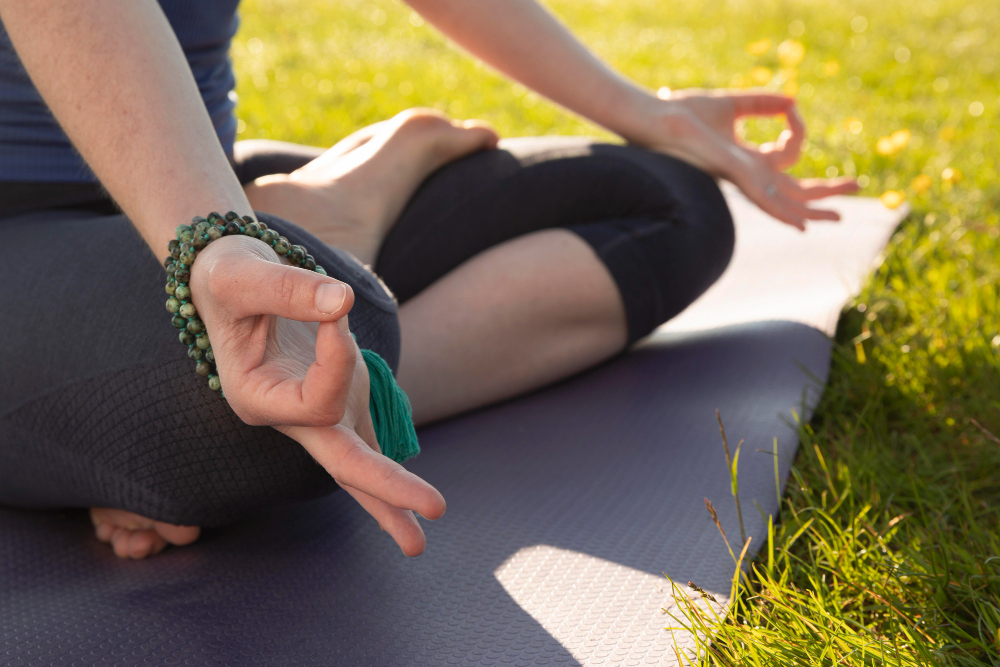Introduction: Managing Diabetes with Yoga and Naturopathy
Diabetes affects millions of people worldwide. Managing blood sugar is important for good health. Many people use medicine, but lifestyle changes also help. In recent years, yoga and naturopathy have gained attention for diabetes management. In fact, breathing exercises, known as pranayama, can support blood sugar control. This blog will explain how pranayama for diabetes works and how you can use it daily.
What Are Breathing Exercises (Pranayama)?
Pranayama is a set of breathing exercises from yoga. These techniques help control your breath. As a result, they calm the mind and body. Many people use pranayama to reduce stress, which can affect blood sugar. Studies show that stress can raise blood sugar levels. Therefore, managing stress is important for diabetes. Pranayama can help lower stress and may support better blood sugar control.
Benefits of Pranayama for Blood Sugar Control
Breathing exercises offer many benefits for people with diabetes. Here are some key advantages:Reduce stress and anxiety, which can lower blood sugar spikesImprove oxygen flow and boost energySupport better sleep, which helps blood sugar balanceEnhance focus and mental clarity
Moreover, regular practice can help you feel more in control of your health. Many people find that pranayama fits easily into their daily routine.
Step-by-Step Guide: Pranayama Techniques for Diabetes
Now, let’s look at some simple breathing exercises to lower blood sugar. Always practice these in a quiet, comfortable place. If you are new to yoga for diabetes management, start slowly.
Anulom Vilom (Alternate Nostril Breathing)
Sit with your back straight and shoulders relaxed.Close your right nostril with your thumb.Breathe in slowly through your left nostril.Close your left nostril with your ring finger. Release your right nostril.Breathe out slowly through your right nostril.Repeat the process, switching sides each time.Practice for 5–10 minutes daily.
Bhramari (Bee Breath)
Sit comfortably and close your eyes.Place your index fingers on your ears.Take a deep breath in.As you breathe out, make a gentle humming sound like a bee.Repeat for 5–7 rounds.
Kapalbhati (Skull Shining Breath)
Sit with your spine straight.Take a deep breath in.Exhale quickly and forcefully through your nose, pulling your belly in.Let the inhalation happen naturally.Repeat for 1–2 minutes, then rest.
Remember, start with a few rounds and increase slowly. If you feel dizzy or tired, stop and rest.
Scientific Evidence: Pranayama and Diabetes
Several studies support the use of pranayama for diabetes. For example, research in peer-reviewed journals shows that regular breathing exercises can lower blood sugar and improve insulin function. The World Health Organization (WHO) and the Centers for Disease Control and Prevention (CDC) both highlight the value of stress management in diabetes care. While pranayama is not a cure, it can be a helpful part of a healthy lifestyle. Always use it along with your doctor’s advice and prescribed treatment.
Safety Tips and Precautions
Before starting any new exercise, safety comes first. Here are some important tips:Consult your doctor, especially if you have heart or lung problemsStart slowly and listen to your bodyStop if you feel dizzy, short of breath, or unwellPractice on an empty stomach or at least two hours after a mealStay hydrated and rest if needed
Children, pregnant women, and older adults should take extra care. It is always best to learn from a trained yoga teacher at first.
Practical Tips: Adding Pranayama to Your Daily Routine
Including breathing exercises in your day is easy. Here are some ways to get started:Set aside 10–15 minutes each morning or eveningFind a quiet, comfortable spot to sitUse a timer to help you stay on trackCombine pranayama with gentle yoga or stretchingTrack your progress in a journal
With regular practice, you may notice better mood, energy, and blood sugar control. Even small changes can make a big difference over time.
Prevention and Long-Term Wellness Strategies
Managing diabetes is a lifelong journey. Along with pranayama, focus on these healthy habits:Eat a balanced diet with whole grains, fruits, and vegetablesStay active with daily walks or gentle exerciseGet enough sleep each nightManage stress with relaxation techniquesCheck your blood sugar as advised by your doctor
Over time, these steps can help prevent complications and support long-term wellness. Remember, every small step counts.
Conclusion: Take Charge of Your Diabetes Management
In summary, pranayama and yoga offer simple, natural ways to support blood sugar control. Breathing exercises to lower blood sugar can be a helpful part of your daily routine. However, always talk to your healthcare specialist before starting any new exercise routine for diabetes management. Your health and safety come first.



